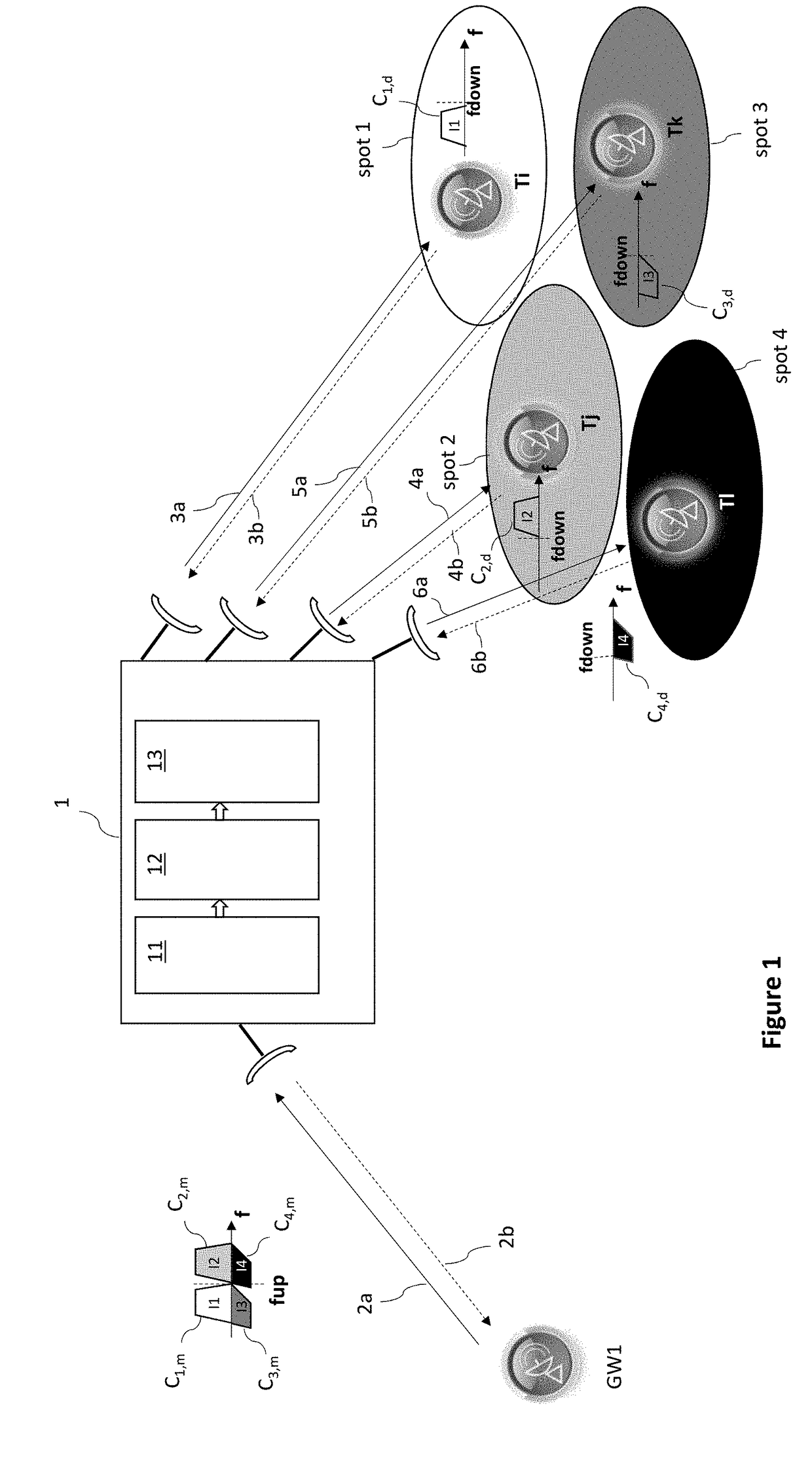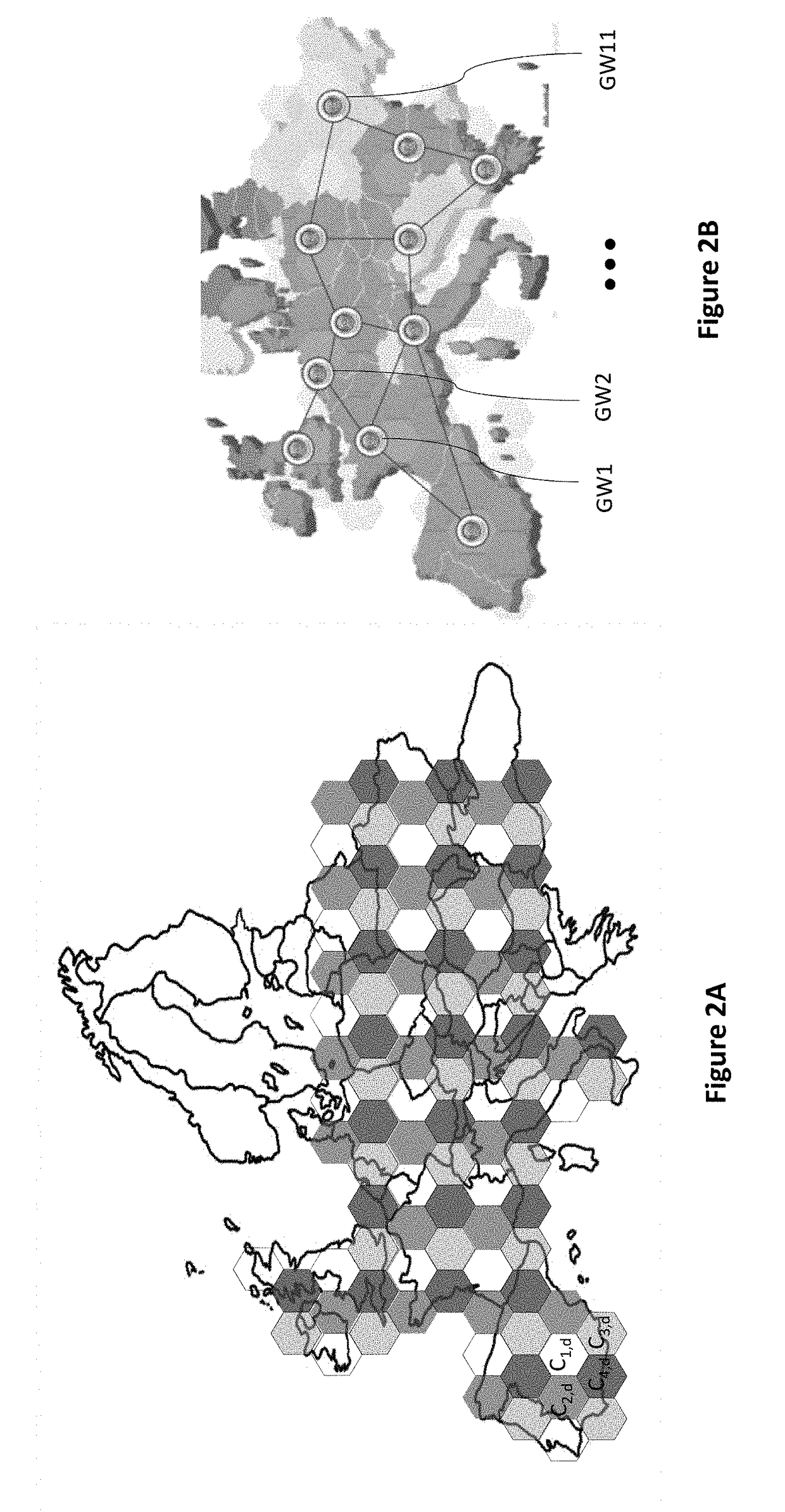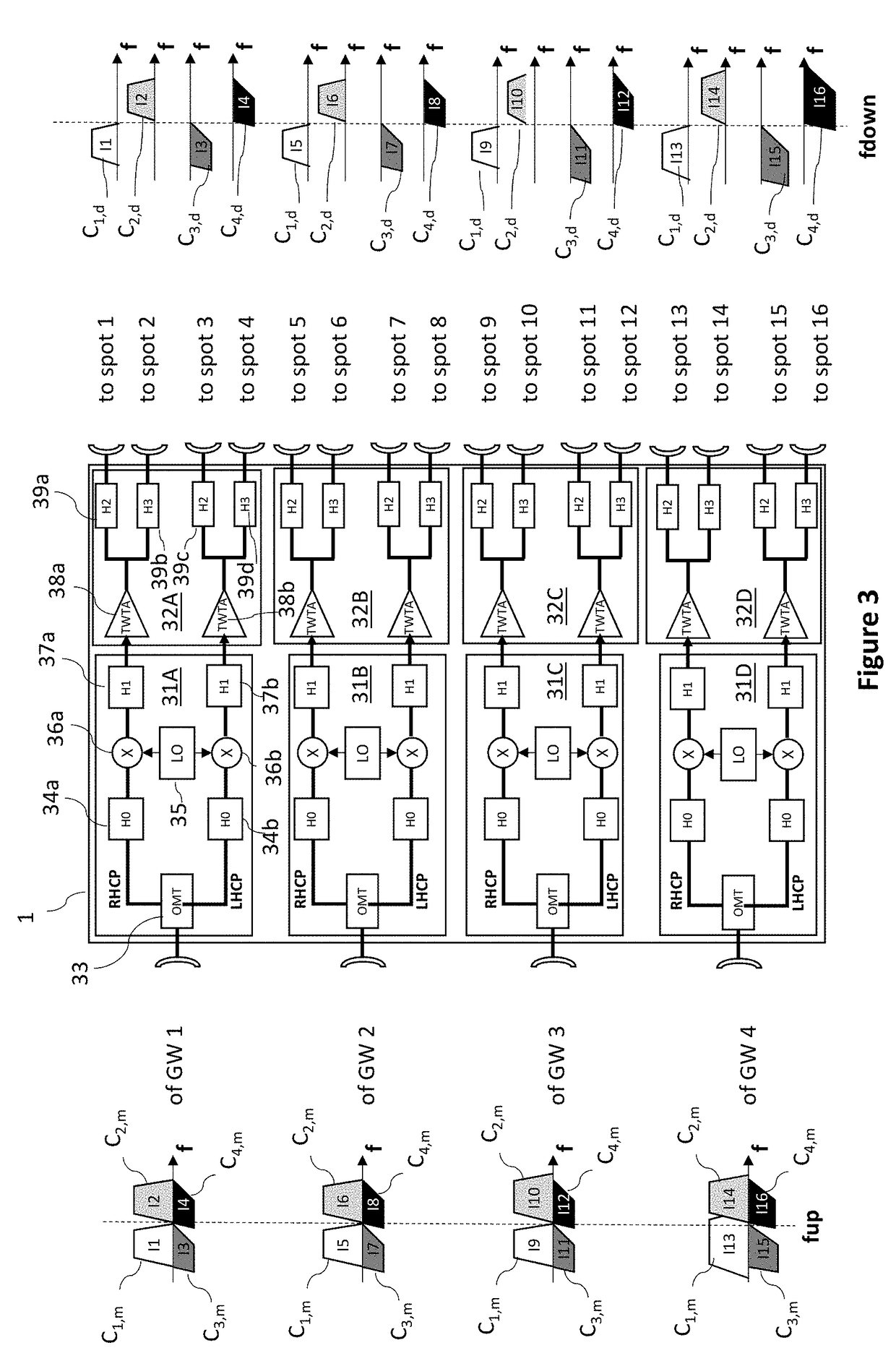Method of telecommunication in a system with multi-spot geographical coverage, corresponding terrestrial station and relay device
a technology of terrestrial stations and relay devices, applied in the field of telecommunication in a system with multi-spot geographical coverage, can solve the problems of limiting the halving the theoretical capacity of the system, and tying the technology to the limit, so as to prevent any total loss of coverage
- Summary
- Abstract
- Description
- Claims
- Application Information
AI Technical Summary
Benefits of technology
Problems solved by technology
Method used
Image
Examples
first embodiment
[0064]Referring now to FIG. 4, we present an example of a transmission of information from four ground stations GW1 to GW4 towards 16 spots (spot 1 to spot 16) via a satellite 1 in the invention (to be compared with the first solution like that of FIG. 3).
[0065]The ground station GW1 transmits information I1, I5, I9 and I13 to the satellite. This is information on the first colors C1,m, C2,m, C3,m and C4,m respectively (see definitions further above). The ground station GW2 transmits, to the satellite, the pieces of information I2, I6, I10 and I14 on the same first colors C1,m, C2,m, C3,m and C4,m respectively. The ground station GW3 transmits, to the satellite, the pieces of information I3, I7, I11 and I15 on the same first colors C1,m, C2,m, C3,m and C4,m respectively. The ground station GW4 transmits, to the satellite, the pieces of information I4, I8, I12 and I16 on the same first colors C1,m, C2,m, C3,m and C4,m respectively.
[0066]The satellite retransmits the pieces of informa...
second embodiment
[0078]Referring now to FIG. 5A, we present an example of transmission of information from 24 ground stations GW1 to GW24 to 144 spots (spot 1 to spot 144) via a satellite 1 according to the invention (to be compared with the second known solution of FIG. 6 discussed here below).
[0079]In this second embodiment, each of the four colors C1,d to C4,d is divided into six sub-colors (denoted sc1 to sc6). There are therefore 24 sub-colors in all. Each of the 24 ground stations is dedicated to a specific sub-color among these 24 sub-colors and transmits, to the satellite, all the information intended for transmission by the satellite with this specific sub-color. Thus, the interference cancelling algorithms (by subtraction at source) can be applied without any need for a network link between the ground stations.
[0080]For example, for the six colors sc1 to sc6 of the color C1,d:[0081]the ground station GW1 transmits, to the satellite, a first part of the pieces of information I1 to I36 inten...
third embodiment
[0099]Referring now to FIG. 7A, we present an example of transmission of information from 24 ground stations GW1 to GW24 towards 144 spots (spot 1 to spot 144) via a satellite 1 in the invention.
[0100]In this third embodiment, each of the four colors C1,d to C4,d is divided into 24 sub-colors (denoted sc1 to sc24). There are therefore 96 sub-colors in all. Each of the 24 ground stations is dedicated to an jth specific sub-color of each of the four colors, j∈{1 . . . 24}, and transmits, to the satellite, all the information to be transmitted by the satellite with the four jth specific sub-colors of the four colors.
[0101]For example, the ground station GW1 transmits the following to the satellite:[0102]a first part of the pieces of information I1 to I36 intended for retransmission by the satellite to the spots 1 to 36 respectively, with the sub-color sc1 of C1,d;[0103]a first part of the pieces of information I37 to I72, intended for retransmission by the satellite, to the spots 37 to...
PUM
 Login to View More
Login to View More Abstract
Description
Claims
Application Information
 Login to View More
Login to View More - R&D
- Intellectual Property
- Life Sciences
- Materials
- Tech Scout
- Unparalleled Data Quality
- Higher Quality Content
- 60% Fewer Hallucinations
Browse by: Latest US Patents, China's latest patents, Technical Efficacy Thesaurus, Application Domain, Technology Topic, Popular Technical Reports.
© 2025 PatSnap. All rights reserved.Legal|Privacy policy|Modern Slavery Act Transparency Statement|Sitemap|About US| Contact US: help@patsnap.com



